last updated: October 2023
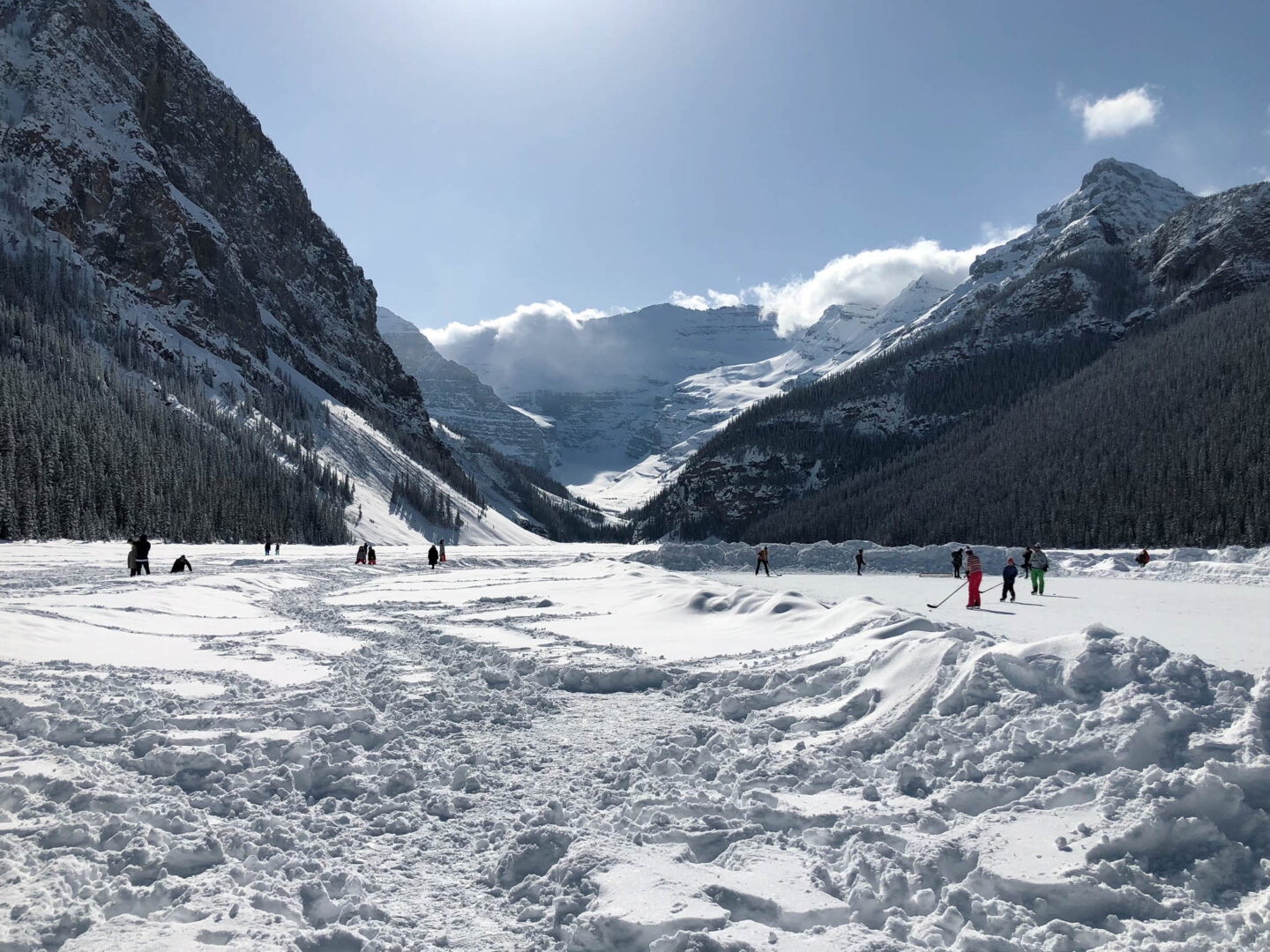
Maybe you are an adrenaline junkie eager to try out all the different snow sports that Banff National Park offers. Or you are a lover of snow and hearty meals by the fire. Maybe you always wanted to visit the Canadian Rockies, but you prefer to spend your summer by the beach. Whatever brought you here, you are in for a treat! Get ready for a nature filled winter adventure set in an incomparable background of towering mountains, snowy forests and frozen glacial lakes. Here is everything you need to know for your first winter trip to Banff National Park.
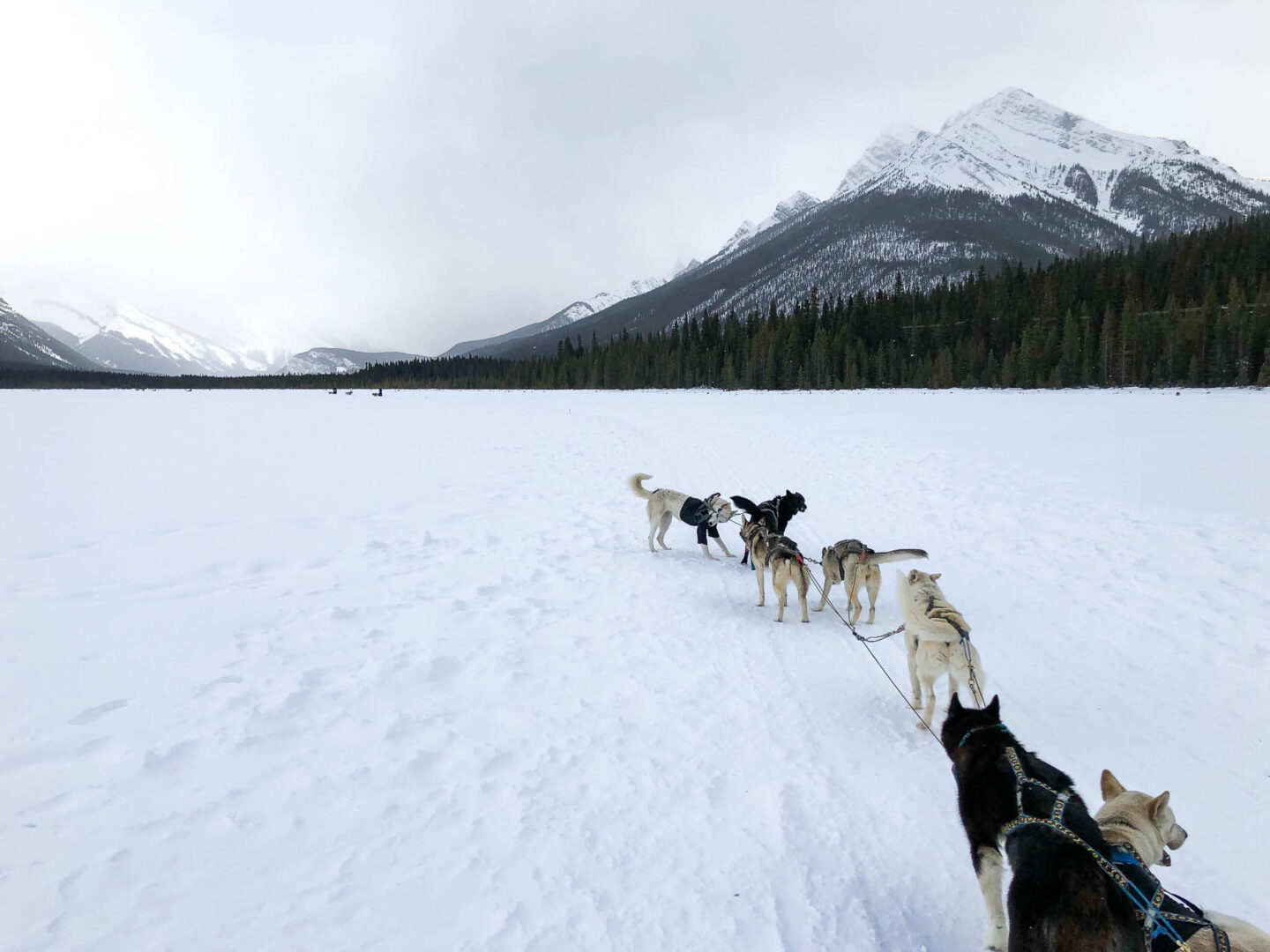
BACKGROUND INFO
Banff National Park dates back to 1883, when railway workers discovered a natural hot spring at the base of Sulphur Mountain, on the eastern slopes of the Canadian Rockies. To resolve ownership disputes and protect the area’s natural splendour, a preserve of 26 square km (10 square miles) was set aside in 1885. Two years later, Canada’s first national park was established and expanded. In 1930, it was renamed Banff National Park. Noted for its beauty, plant and animal diversity and ongoing geologic processes, Banff National Park was designated part of the Canadian Rocky Mountain Parks UNESCO World Heritage Site in 1984.
Today the park occupies 6641 square km (2564 square miles), all within the Canadian province of Alberta. It is home to several mammal species, amongst them grizzly and black bears, elk, moose, wolves, coyotes and pumas.
USEFUL RESOURCES
I have written several blog posts about Banff which I will direct you to as you read through this post. Even though I would be super happy if you told me that they were all you needed to plan your winter trip to Banff, I would still recommend that you browse through the following websites to plan your visit.
- Official Banff & Lake Louise Tourism: Check out all the incredible winter activities available!
- Parks Canada-Banff: Amongst plenty of useful info, it provides current information on roads / trails closures and even availability for parking spaces.
- Travel Alberta: Nice all-rounder in case you are venturing further from Banff National Park.
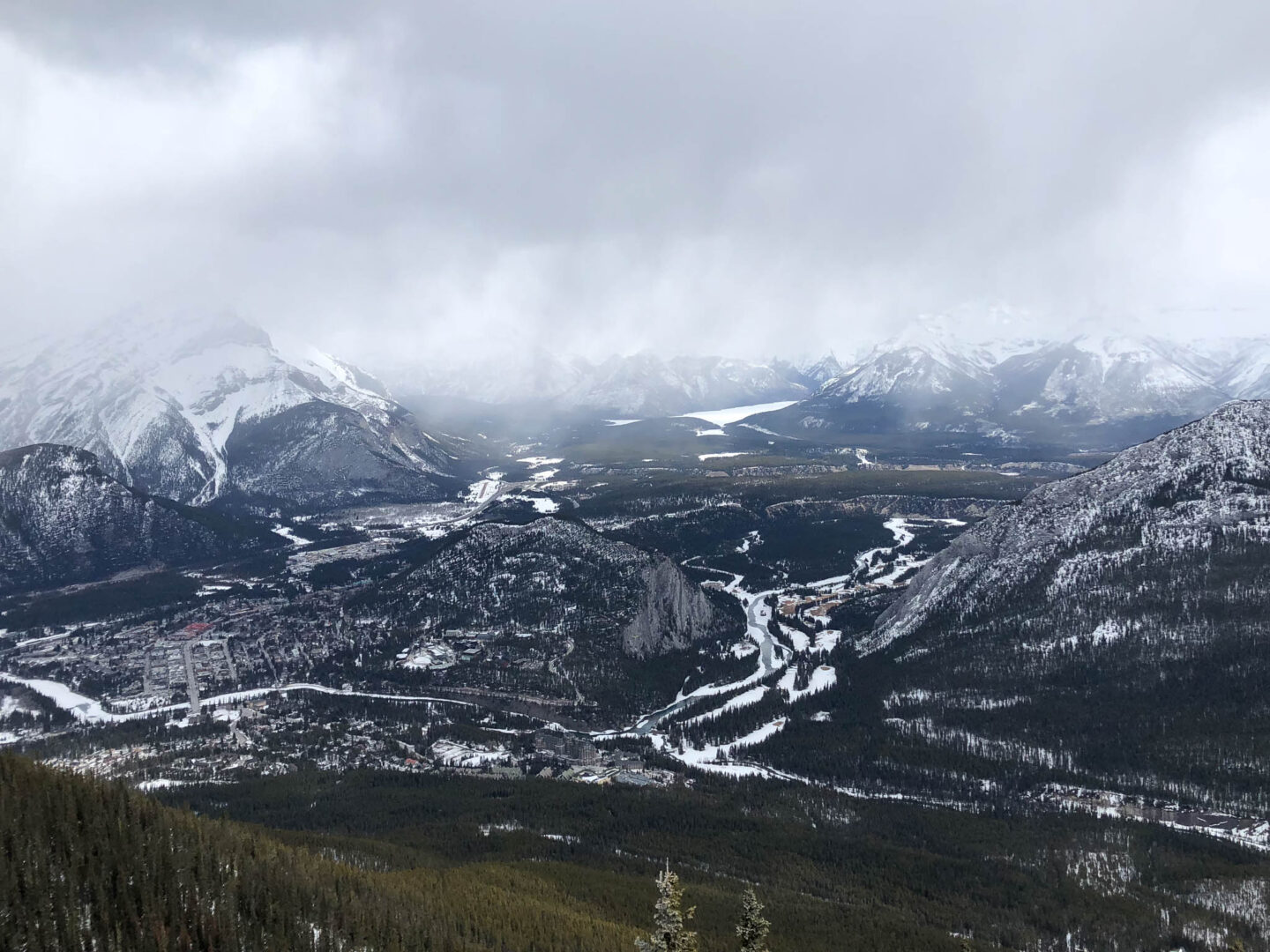
NO 1. WHEN IS THE BEST TIME TO VISIT BANFF NATIONAL PARK?
In most tourist destinations around the world, there is a high season, a low season and two shoulder seasons in between. Banff is a bit different and that goes to show what a unique destination this is.
Banff National Park receives three to four million visitors every year. Most people visit during the summer. Hiking, camping, biking and canoeing in the turquoise glacial lakes are the most popular activities. Specifically for avid hikers, visiting Banff in the summertime is a no brainer. Overall, summer is Banff’s ‘official’ high season.
However, for winter lovers and snow sports enthusiasts, the period from mid-December to mid-April is the best time to visit Banff National Park. Ski season is in full swing, the lakes are frozen and there is the quintessential eye candy of the blanket of snow over mountains, forests and possibly even Banff town. A second high season, for a different genre of travellers!
This leaves low season and the two shoulder seasons to be one and the same: mid-April to mid-June and October through mid-December. These are also the months that snow and ice is either thinning down for summer or building up for winter.
READ MORE:
Skiing the Canadian Rockies: Sunshine & Lake Louise VS the Alps
Skiing the Canadian Rockies: Sunshine & Lake Louise ski resort guides
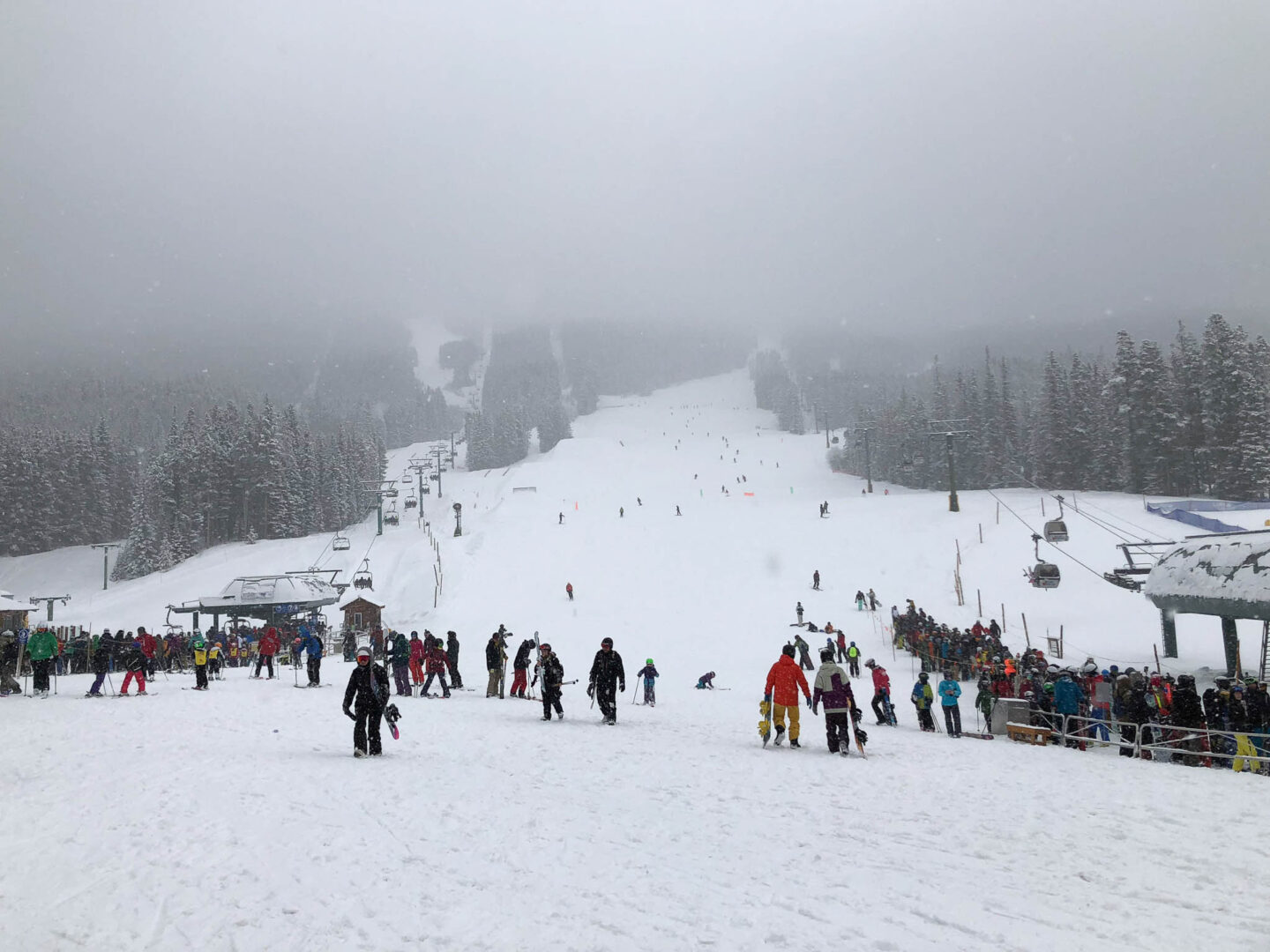
NO 2. WHY VISIT BANFF NATIONAL PARK IN WINTER / EARLY SPRING?
Obviously, visiting Banff in the colder months of the year is perfect for those who love snow sports. The park features three world class ski resorts. Furthermore, there are countless opportunities for ice skating, ice walking, snowshoeing and even ice climbing or ice fishing!
But even for those not familiar with snow sports, and maybe more so for those not familiar with snow, I would insist that visiting Banff National Park in the colder months is an unmissable life experience. Especially for people living in milder climates, compared to Alberta, the jaw dropping frozen landscapes and opportunities for ‘hygge’ will redefine winter for you for life. The colder months transform Banff’s valleys, lakes and mountains into a magical winter wonderland of unparallel beauty. It is worthy of a top spot in any traveller’s bucket list. Moreover, Canadians know how to have fun in the cold and, trust me when I say that, once you step foot in Canada, you will too!
At a time when most of us stay at home counting the days until summer, visit Banff and get swept up in a celebration of winter, nature and life in the great outdoors!
READ MORE:
Travelling to Banff, Canada in March: Why go & what to expect
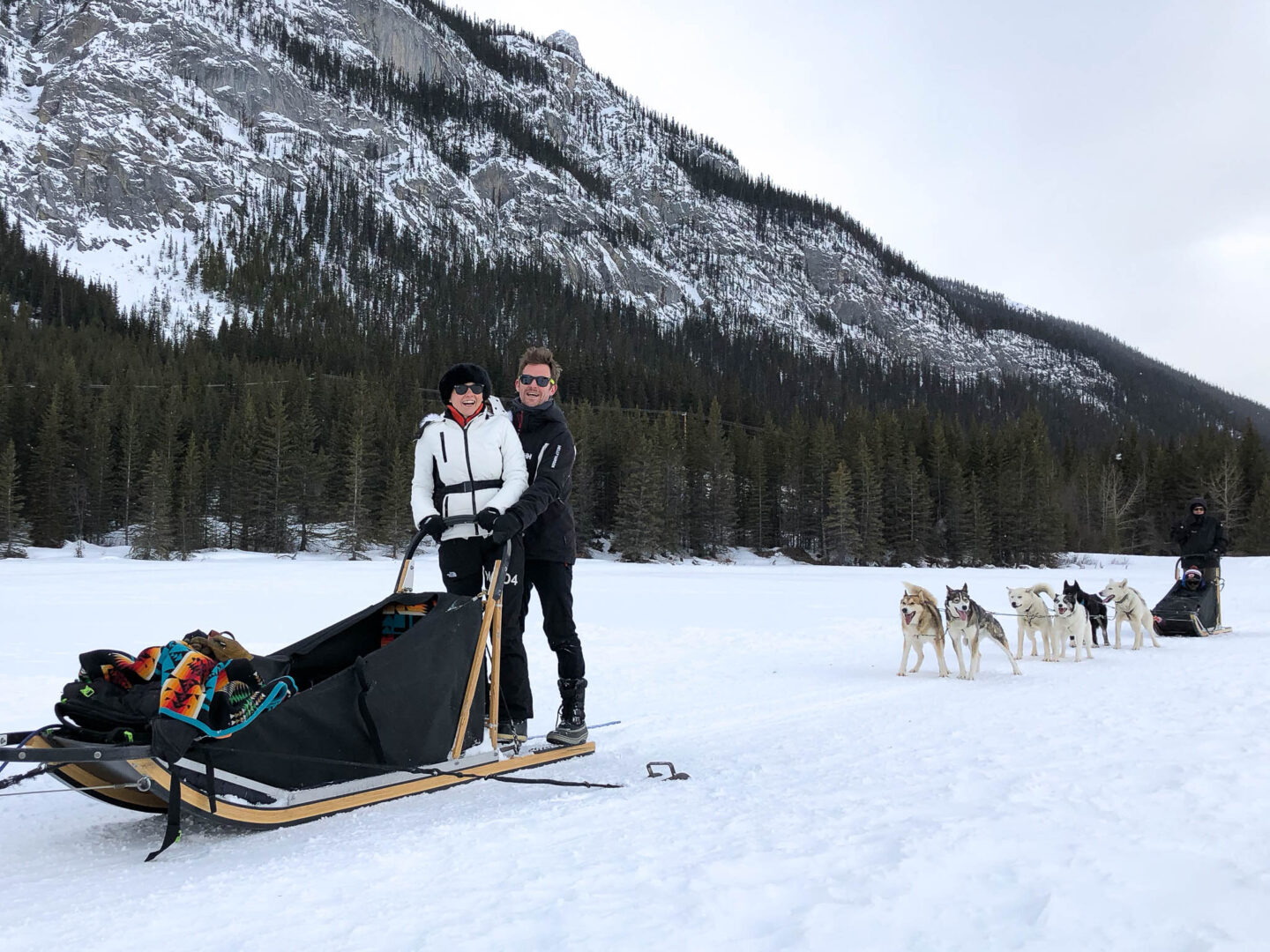
NO 3. HOW LONG DOES WINTER ACTUALLY LAST IN BANFF NATIONAL PARK?
Winter in Banff lasts more than the northern hemisphere’s typically cold period of December, January and February. Most people do not realise that high elevation lakes like Lake Louise are frozen until early June… Or that the first snowfall of the season can be as early as September!
Generally, the first significant dumps of snow start around November. Winter and spring bring large amounts of snow, with snow storms occurring as late as May. Hiking trails in the mountains don’t clear of snow until the end of June.
So, as you are planning your trip to Banff National Park, keep in mind that the window of opportunity for frolicking in snowy valleys, frozen lakes and even practicing your favourite winter sport is generally open from November to May!
Nevertheless, if you are sensitive to the cold and would hate to have super low temperatures possibly disrupt your perfectly planned outdoors activities, avoid Canada’s deepest darkest winter in January and early February.
BANFF WEATHER SEASONAL BREAKDOWN
January – March
Winters are very cold and dry, but it can get unexpectedly warmer when the Chinook winds blow. The mountains receive large amounts of snow, a moderate amount in the town of Banff. January is the coldest month, with lows of -15°C / 5°F, though temperatures can drop to -30°C / -22°F.
April – June
Not the stereotypical springtime since a good amount of snow is on the ground. Ski resorts are open until May. Temperatures can drastically fluctuate around an average of 10°C / 50°F.
July – September
Summers are generally warm and sunny, but cold weather spells are not uncommon. Due to the elevation of over 1400m / 4600ft, nights are cool. Highest temperatures are noted in July, around 22°C / 72°F.
October – December
The beginning of autumn brings warm days with cold mornings and evenings. October can have sunny days between 10°C / 14°F to -1°C / 30°F. Each week temperatures progressively drop. The first large snowfalls usually occur in November.
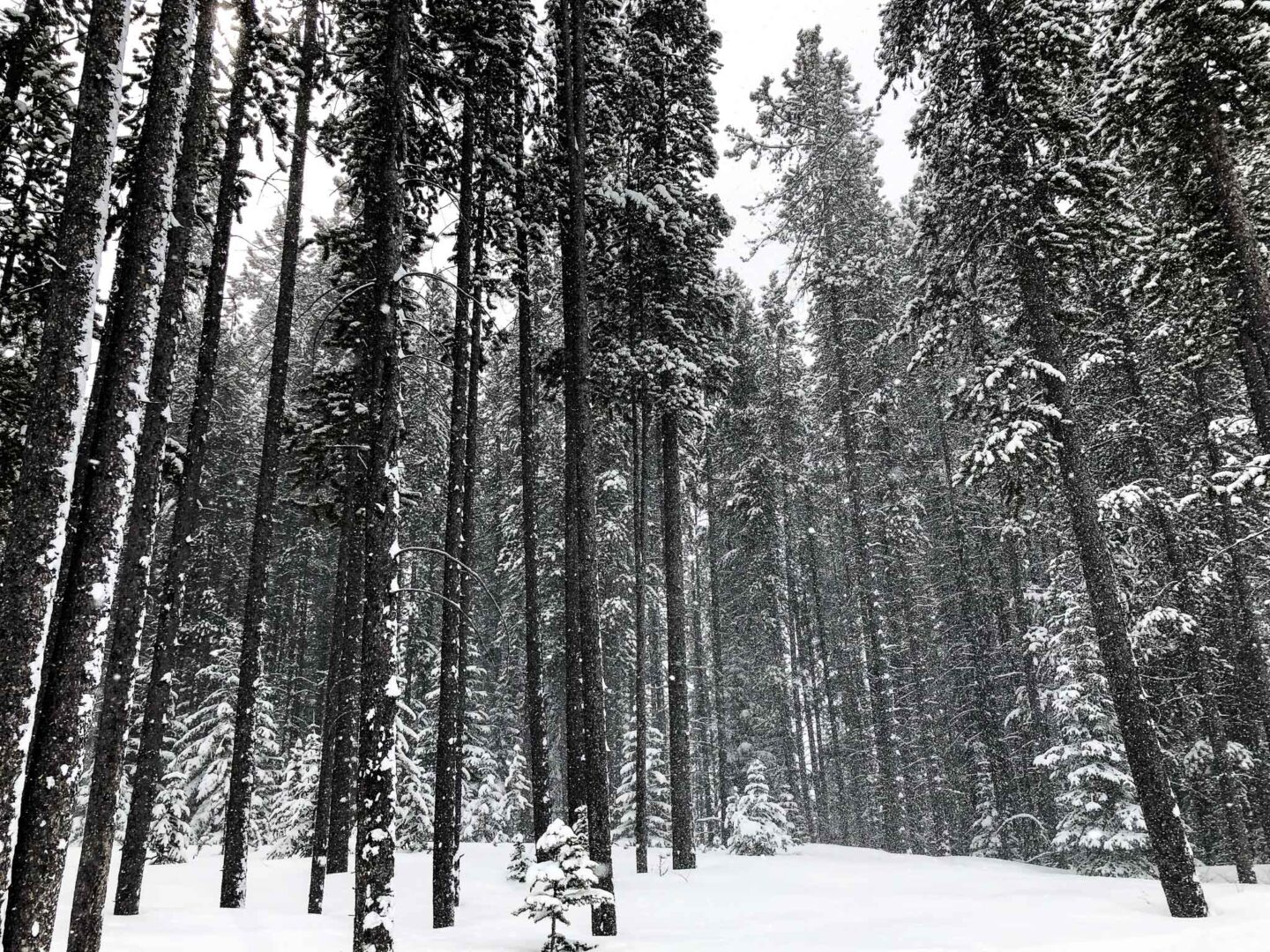
NO 4. WHERE TO STAY IN BANFF NATIONAL PARK?
THE TOWN OF BANFF
The town of Banff is the gateway to the park. This is a proper North American mountain town with a true western vibe offering plenty of relaxation, entertainment and a lively social scene. There are plenty of things to do in the town of Banff, so if you are based there, the days in between all your wilderness adventures will also be well spent. The town features a variety of accommodation options, from large hotels to scenic lodges and rental properties.
BANFF VS CANMORE
Some people suggest staying in Canmore, just outside the park border to avoid the crowds and tourist vibe of the town of Banff. It is true that Banff can get very busy in the summer. However, if you are visiting in winter, like I did, this is unlikely to be an issue. As for the ‘tourist vibe’, it is true that Banff is a town created to host visitors to the park. Nevertheless, while it may lose a point for authenticity, in my opinion, it gains lots for its charm, uniqueness and the 360-degree mountain view from pretty much anywhere you are!
We visited Canmore on our way to our dog sledding tour. To be honest, on a cold winter’s afternoon it felt a bit ordinary and not very lively. During winter, consider staying in Canmore only if you are struggling with accommodation prices inside the park.
LAKE LOUISE
There are plenty of great accommodation options near Lake Louise. The iconic Fairmont Chateaux Lake Louise is built on the lakeshore. For less extravagant stays, check out the many B&Bs in the village. Last but certainly not least, for some true Canadian cabin-in-the-woods vibe, check out these scenic lodges scattered all around the woodlands near Lake Louise and Lake Louise ski resort.
READ MORE:
Best things to do in the town of Banff, Canada
An unforgettable winter’s day in Lake Louise, Canada
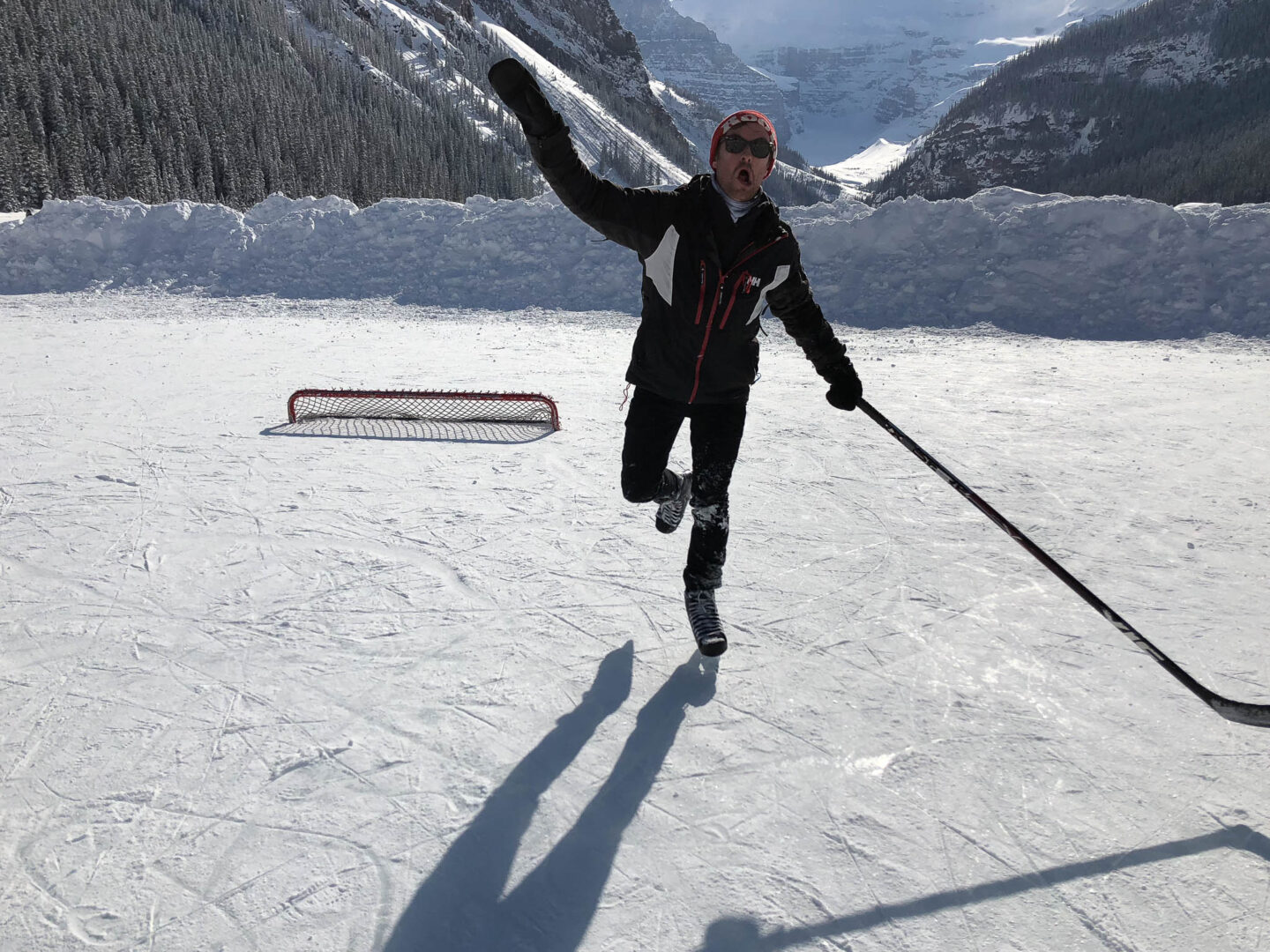
NO 5. HOW TO CREATE AN ITINERARY FOR BANFF NATIONAL PARK?
If you are travelling to Canada from anywhere further than, let’s say, northern USA, it is easy to get carried away by the desire to see as much of the country as possible, all in one go.
When my friends and I planned our trip to Banff from the UK, we initially thought of adding in our less than 2-week trip, a few days in Jasper National Park. Then, we considered squeezing a few nights stay in Calgary as well… You know, since we were landing there! We even discussed about flying over to Vancouver afterwards and visit Whistler… Sounds familiar? Unless you have a month at your disposal, keep it simple.
Visiting Banff National Park is a proper trip on its own right. As tempting as it is to combine half of Canada with it, make sure you allow for enough time to enjoy all the sights. Further than the sightseeing, it would be a shame to miss out on all the fun activities available, even in the deepest, darkest winter.
TOP TIP -INCLUDING BANFF IN A WIDER CANADA TRIP ITINERARY:
If you do, in fact, have loads of time on your hands and are planning a longer Canadian adventure, find below some ideas to extend your itinerary.
- Classic add-on: Explore Jasper National Park.
- For those who love to drive: Drive through the Rockies and explore Whistler and Vancouver.
- For those who love trains (and a dash of luxury): Go on a dreamy train journey with the Rocky Mountaineer (I so want to do that!).
READ MORE:
12-day Banff winter wonderland itinerary: Ski & see the best
Banff winter bucket list: 5 amazing places to go & things to do
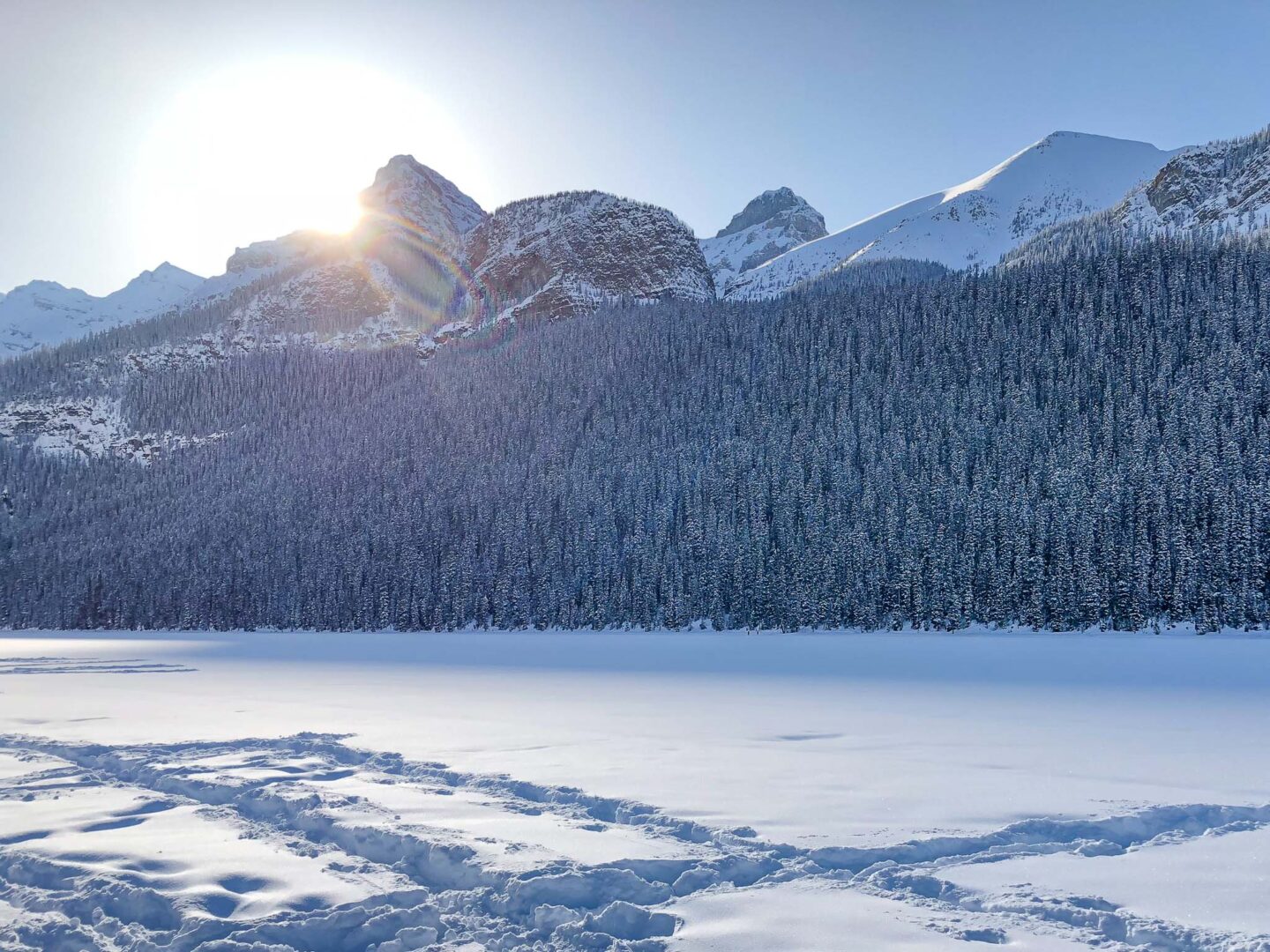
NO 6. HOW TO GET TO & AROUND BANFF NATIONAL PARK?
The town of Banff is a 90min (140km / 87miles) drive west of Calgary, Alberta with the closest airport being Calgary International Airport. If you are coming from the west, it is a scenic, full day’s drive (850km / 530miles) from Vancouver.
Most visitors hire a car to get to and around Banff National Park. This is what my friends and I did when we visited. Roads are fairly wide and smooth, and they are regularly cleared of snow. Large dumps of snow are routine for Canadians, so the traffic network does not get impacted as it does in so many countries around the world! Nevertheless, do your part and be prepared for bad weather conditions. Make sure you are familiar with local regulations about snow tires; the period when they are required by law might be longer than you think. Lastly, be prepared to see wildlife crossing the main highway or even the side road in the town of Banff!
If you don’t fancy driving, there are bus and shuttle services from Calgary (downtown or the airport) to the town of Banff and from there to all key attractions.
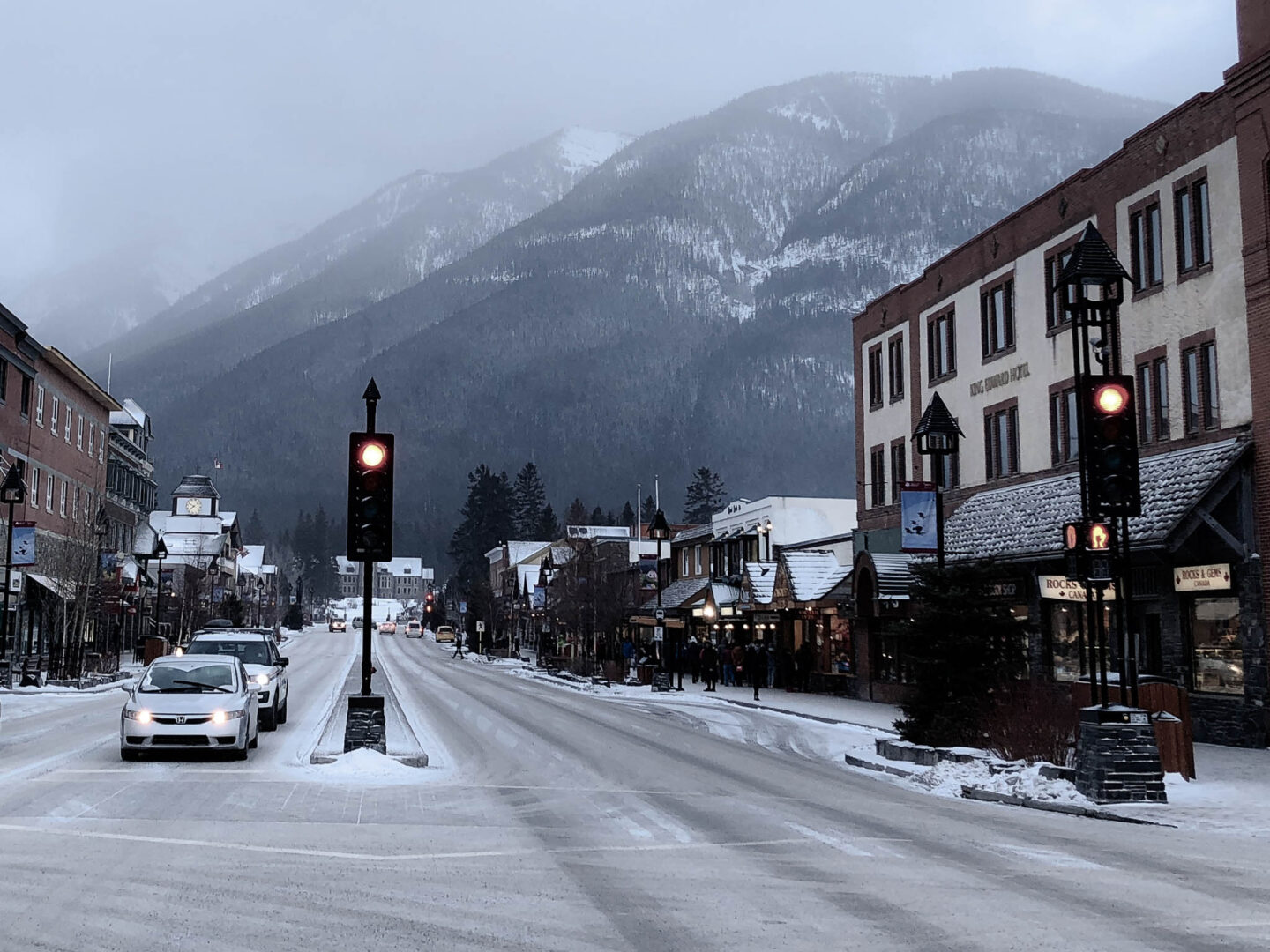
NO 7. WHAT IS THE BANFF NATIONAL PARK PASS?
All visitors to Banff National Park are required to have a valid National Park Pass.This entry fee is intended to help support visitor services and facilities. Furthermore, it helps maintain the park’s legacy for future generations. Purchase your pass online, at the park gates if driving to the park, or in person at the visitor centres in Banff and Lake Louise. If you are visiting the park with a tour operator, make sure to clarify if they will be purchasing a park pass on your behalf.
You need a National Park Pass for each day you stop in or spend time in a Canadian National Park. The town of Banff, Lake Louise, Johnston Canyon, Sunshine Village Ski Resort, Lake Louise Ski Resort, Mt Norquay Ski Resort, Peyto Lake, Moraine Lake, amongst many other sights, are all within Banff National Park. Have a look at the Banff National Park map and acquaint yourself with the area so that you don’t underestimate the number of days you will need the pass for. Also note that it is irrelevant whether your accommodation is within the park or not. Your mode of travel does not matter either. Lastly, ski resort passes, or parking passes are also independent of the National Park Pass.
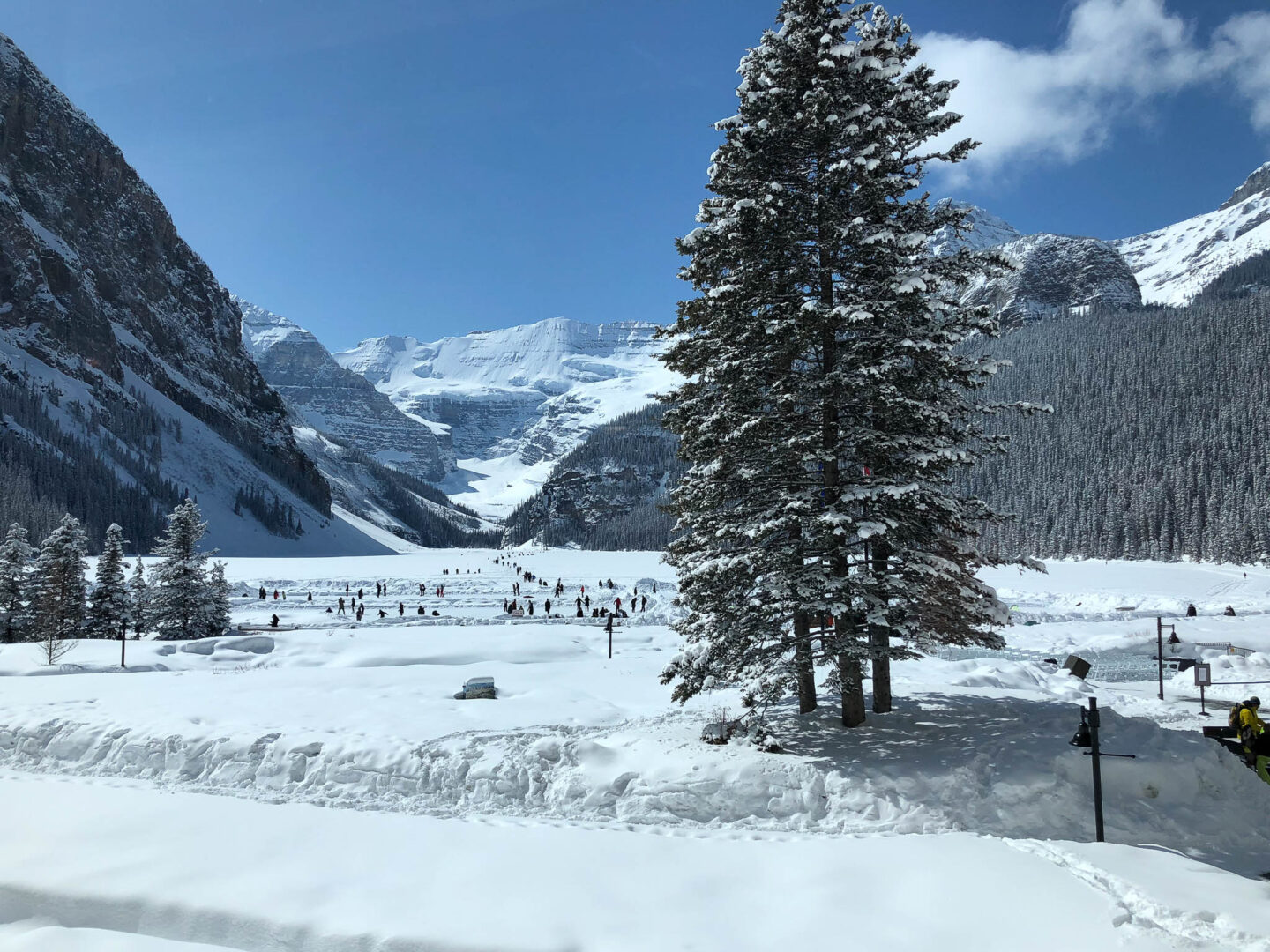
FINAL THOUGHTS
So that was it! You are all set to start planning your winter trip and putting together your itinerary. Make sure to check out the rest of my Banff travel guides for ideas on activities, sights and, if you are a skier, insights on Banff’s ski resorts!
This is not a sponsored post & I am not affiliated with any of the hotels, restaurants or organisations mentioned.
A DEEP DIVE INTO CANADA
Looking for more Canada travel guides? Or maybe tips, inspiration and practical advice for effortless travel and authentic experiences? Hit the button below!
___
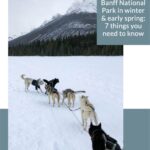
Excellent article! Your post is essential today. Thanks for sharing, by the way.
Author
Thank you!
Very nice article,very informative!
Author
Thank you!